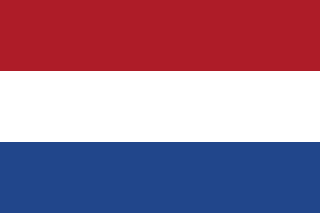 W
WDutch colonisation of the Guianas—the coastal region between the Orinoco and Amazon rivers in South America—began in the late 16th century. The Dutch originally claimed all of Guiana but—following attempts to sell it first to Bavaria and then to Hanau and the loss of sections to Portugal, Britain, and France—the section actually settled and controlled by the Netherlands became known as Dutch Guiana.
 W
WBerbice is a region along the Berbice River in Guyana, which was between 1627 and 1815 a colony of the Netherlands. After having been ceded to the United Kingdom in the latter year, it was merged with Essequibo and Demerara to form the colony of British Guiana in 1831. In 1966, British Guiana gained independence as Guyana.
 W
WCayenne, currently the capital of French Guiana, was a hotly contested area between French and Dutch colonizers in the 17th century. In 1615, Theodore Claessen founded a Dutch colony at Cayenne, but it seems to have perished quickly. Another expedition to found a settlement at Cayenne left Flushing in 1626, under the captaincy of Claude Prevost.
 W
WThe College of Kiezers was an electoral college in the Dutch colonies of Essequibo and Demerara and their successor, British Guiana.
 W
WThe Combined Court was the legislature of British Guiana until 1928. In its final form, it consisted of a sitting of the Court of Policy together with the elected Financial Representatives.
 W
WThe Court of Policy was a legislative body in Dutch and British Guiana until 1928. For most of its existence it formed the Combined Court together with the six Financial Representatives.
 W
WDemerara is a historical region in the Guianas on the north coast of South America which is now part of the country of Guyana. It was a Dutch colony until 1815 and a county of British Guiana from 1838 to 1966. It was located about the lower courses of the Demerara River, and its main town was Georgetown.
 W
WSurinam was a Dutch plantation colony in the Guianas, neighboured by the equally Dutch colony of Berbice to the west, and the French colony of Cayenne to the east. Surinam was a Dutch colony from 26 February 1667, when Dutch forces captured Francis Willoughby's English colony during the Second Anglo-Dutch War, until 15 December 1954, when Surinam became a constituent country of the Kingdom of the Netherlands. The status quo of Dutch sovereignty over Surinam, and English sovereignty over New Netherland, which it had conquered in 1664, was kept in the Treaty of Breda of 31 July 1667, and again confirmed in the Treaty of Westminster of 1674.
 W
WThe Dutch West India Company was a chartered company of Dutch merchants as well as foreign investors. Among its founders was Willem Usselincx (1567–1647) and Jessé de Forest (1576–1624). On 3 June 1621, it was granted a charter for a trade monopoly in the Dutch West Indies by the Republic of the Seven United Netherlands and given jurisdiction over Dutch participation in the Atlantic slave trade, Brazil, the Caribbean, and North America. The area where the company could operate consisted of West Africa and the Americas, which included the Pacific Ocean and the eastern part of New Guinea. The intended purpose of the charter was to eliminate competition, particularly Spanish or Portuguese, between the various trading posts established by the merchants. The company became instrumental in the largely ephemeral Dutch colonization of the Americas in the seventeenth century. From 1624 to 1654, in the context of the Dutch-Portuguese War, the GWC held Portuguese territory in northeast Brazil, but they were ousted from Dutch Brazil following fierce resistance.
 W
WEssequibo was a Dutch colony on the Essequibo River in the Guiana region on the north coast of South America from 1616 to 1814. The colony formed a part of the colonies that are known under the collective name of Dutch Guiana.
 W
WThe Netherlands Armed Forces in Suriname was the military force maintained by the Kingdom of the Netherlands in its colony of Suriname, in the area that is now independent Republic of Suriname.
 W
WPomeroon is the name of a former Dutch plantation colony on the Pomeroon River in the Guiana region on the north coast of South America. After early colonization attempts in the late 16th century were attacked by Spaniards and local Indians, the original inhabitants fled the interior of Guiana, founding the colony of Essequibo around Fort Kyk-Over-Al shortly after. A second, and more serious attempt at colonization started in 1650, but was ultimately unsuccessful, as French privateers destroyed the colony in 1689. In the late 18th century, a third attempt of colonization was started, this time under the jurisdiction of the Essequibo colony.
 W
WThe Society of Suriname was a Dutch private company, modelled on the ideas of Jean-Baptiste Colbert and set up on 21 May 1683 to profit from the management and defense of the Dutch Republic's colony of Suriname. It had three participants, with equal shares in the costs and benefits of the society; the city of Amsterdam, the family Van Aerssen van Sommelsdijck, and the Dutch West India Company. Only through mutual consent could these shareholders withdraw from the society.